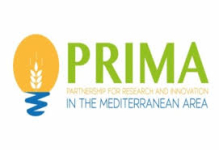Economic impact:
CAMEL-SHIELD will provide knowledge and tools that will support the contribution of camel breeding systems to local economies. The research team will organize regular informal and formal meetings with technical livestock services, local authorities and local herders’ organizations. Those meetings will promote new farmers’ strategies and innovations in coherence with the research results, including new feeding and herd management practices that will improve the herd productivity. Participatory meetings with value chains’ stakeholders will allow farmers to market more livestock, meat and milk, as well as to contribute more proactively to the local tourism economy. The Project will also contribute to support local research and development capacities that will channel and support new private and public investments in the sector. Private investments will include the setting up of meat and milk processing facilities, veterinarian or feed companies, or touristic business using camel transportation services. Public investments will include upgrading livestock marketing facilities, supporting animal health and sanitary control, and building animal races or touristic infrastructure.
Societal impact:
The outcome of CAMEL-SHIELD will contribute to determine the viability of camel systems and assess their environmental impacts. In the context of the global challenge of food security to feed a rapidly rising population, livestock production will need to improve significantly its net contribution to the supply of human edible protein. Camels are well positioned to support an alternative to this situation in areas under high stress. They may exploit local resources, roughage and other fibrous resources (e.g. agro-industrial by-products, crop residues) not intended for human consumption. However, these primary resources tend to be of highly variable quality and produced in highly variable environments, with additional hazards caused by climate change. CAMEL-SHIELD will explore and quantify natural biological diversity in camelids to determine their ability to adapt to variable feeding conditions (using generic protocols that will facilitate information collection across the region). The modelling tools will allow innovation in managing diversity within the herd and across the environment to achieve greater resilience at the herd and population level. Finding this balance according to the different local environmental conditions will contribute to the sustainability of viable camel breeding systems and to a more sustainable use of the land. Thus, CAMEL-SHIELD will contribute (i) to a more efficient use of natural resources within the wider human edible protein production cycle, (ii) to an increase in the provision of ecosystem services by grazing systems, (iii) to the promotion of the rural bio-economy, (iv) the management of large landscapes. These elements are important for the reduction of rural depopulation. In addition, the adaptation of genetic resources and management to local conditions improves animal wellbeing. Camelids are more adapted to the environment in which they live in. In addition, the link between animal, territory and production system is also important for consumers, who are paying increasing attention to the "extrinsic" quality attributes of meat and dairy products. It improves the perception of livestock and generates a positive impact on the rural community.

















